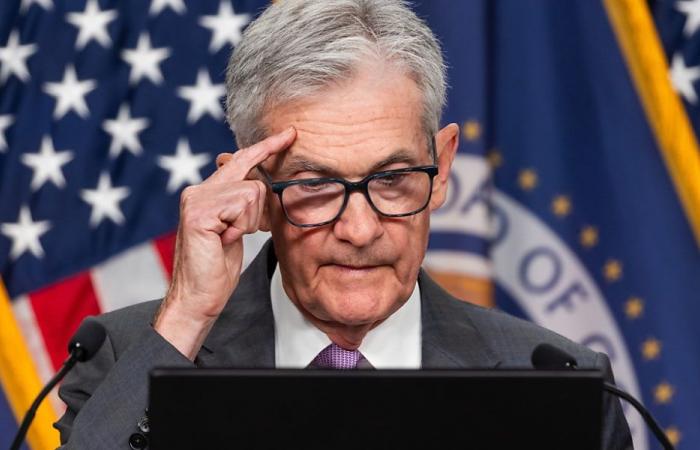A quarter point or more? It now seems certain that the US Federal Reserve (Fed) will announce its first rate cut since 2020 at the end of its meeting on Wednesday, but the speed of this easing remains uncertain.
The central bank meeting is the last before the November 5 US election, which will pit former Republican President Donald Trump against Democratic Vice President Kamala Harris.
The Fed is independent of political power, but a rate cut will have real consequences for Americans’ purchasing power, particularly by making it easier for them to access credit. And that could give Kamala Harris a boost.
For Donald Trump, the Fed can only ease its monetary policy because “the economy is not good, otherwise they would not be able to do it,” he said Tuesday at a rally in Flint (Michigan), promising to further “lower rates” if he is elected.
The meeting of the Fed’s monetary policy committee, the FOMC, which began on Tuesday morning, resumed on Wednesday “at 09:00 (13:00 GMT) as planned,” a Fed spokesperson told AFP.
The decision will be announced in a statement at 2 p.m. local time (6 p.m. GMT), followed by a press conference by Fed Chairman Jerome Powell.
In anticipation of this decision, the New York Stock Exchange opened in a scattered order on Wednesday but close to equilibrium.
“Clearly reported”
By lowering rates, the Fed now wants inflation to gradually fall back into line and prevent unemployment from rising in turn.
Rates were raised to curb soaring prices, and have been in the range of 5.25 to 5.50% since July 2023, their highest level in more than 20 years.
The start of easing “has been clearly signaled”, notably by Jerome Powell, commented Lauren Saidel-Baker, economist for the consultancy ITR Economics, in a note: “the only question now is the magnitude” of the reduction.
Fed officials could err on the side of caution to avoid reviving inflation, with a modest cut of a quarter point (25 basis points).
Or, worried about a rapid deterioration in the jobs market and the prospect of a recession, they could hit harder, by half a point (50 basis points) directly.
The latter option is now favored by nearly two-thirds of market participants, according to CME Group’s assessment.
Krishna Guha, an economist at investment firm Evercore, is counting on a half-point cut, which the Fed would present as “an initial +50+ (…), and not as the first in a series” of cuts of the same magnitude.
Greg Daco, chief economist at EY, believes that “progressiveness will prevail” among FOMC members, and therefore expects only a quarter point.
Dual mandate
Whatever the decision, the move means that the employment situation, which Fed officials have pushed aside in recent years because the labor market was doing so well, is returning to the forefront of their concerns.
The mission of the powerful American Federal Reserve is in fact twofold: to ensure price stability and full employment.
“I have rebalanced my focus on both sides of the dual mandate for the first time since early 2021,” Atlanta Fed President Raphael Bostic said in early September.
Inflation is gradually getting back on track: the PCE index, which the Fed wants to bring back to 2%, remained stable in July, at 2.5% over a year. The August data will be published on September 27.
The CPI index fell in August to its lowest level since February 2021, 2.5% over a year. As for the unemployment rate, it fell in August, to 4.2%, but job creation is slowing.
Fed officials will also update their forecasts for the U.S. economy on Wednesday, including inflation, GDP and unemployment. They will also say how far they plan to cut rates.
This article was published automatically. Sources: ats / awp / afp






